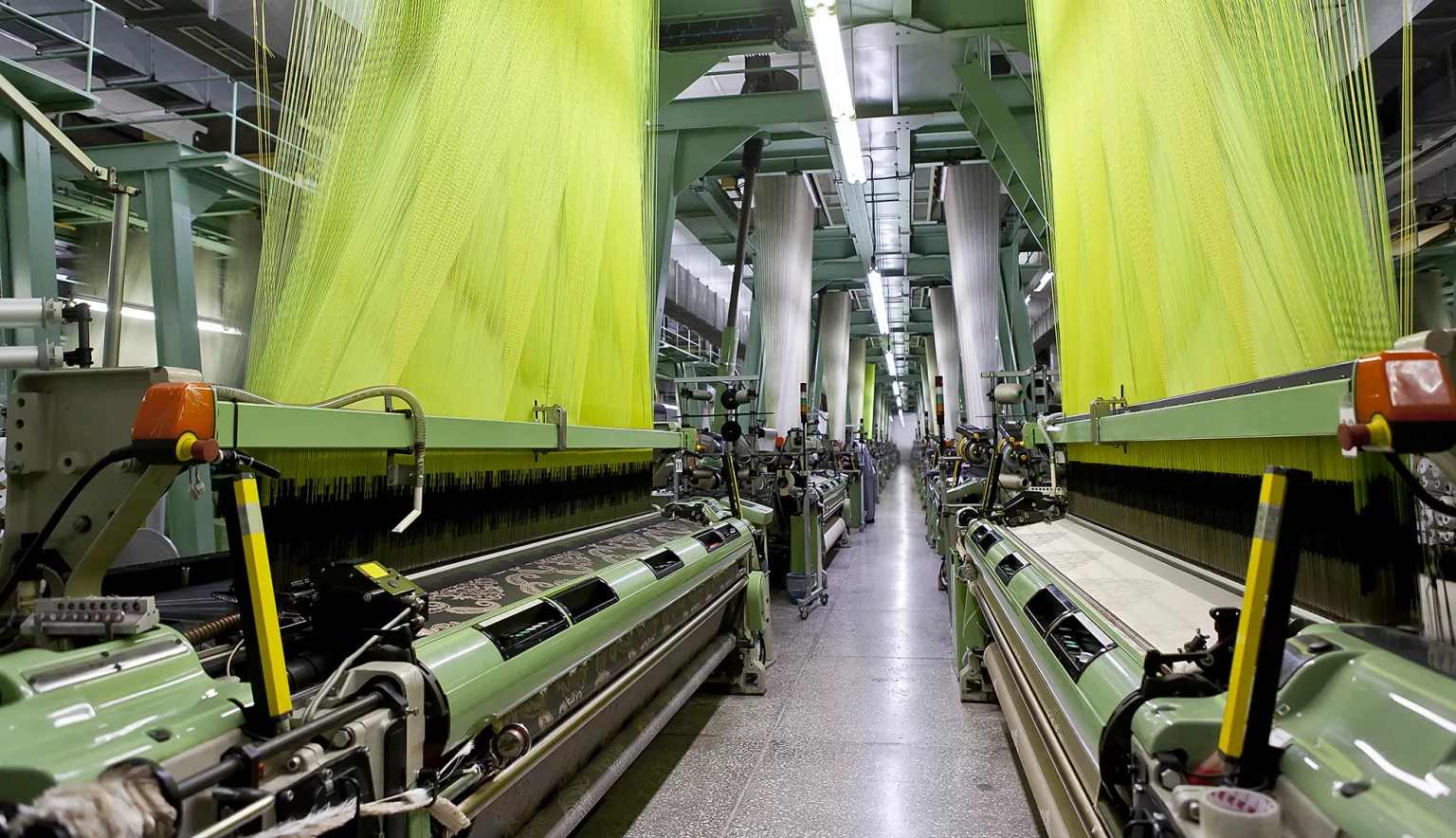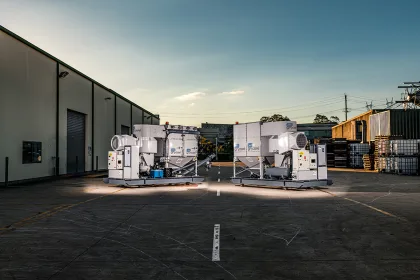A world-leading manufacturer of apparel for iconic retail brands, we talk to the Sri Lanka Apparel Exporters Association and peel back the layers on Sri Lanka’s textiles manufacturing industry as a trusted and ethical end-to-end partner.
SPOTLIGHT ON SRI LANKA’S APPAREL INDUSTRY
The manufacturing and foreign export of apparel has long been a staple of the Sri Lankan economy, ever since its inception within the domestic market post-independence in 1948. Current statistics estimate that the industry contributes close to 47 percent of Sri Lanka’s total exports, and 59 percent of the country’s industrial exports.
Sri Lanka today enjoys an esteemed reputation as not just a manufacturer of choice, but also a trusted end-to-end solutions provider that oversees the entire process from design conceptualisation to product delivery.
This is evidenced by the esteemed list of iconic brands and retailers that rely on Sri Lankan manufacturers, including Calvin Klein, Levi’s, Ralph Lauren and Victoria’s Secret to name just a few. With the majority of such brands based in the US, the region has grown to represent Sri Lanka’s largest export market, followed by the UK.
In today’s industrial climate, stakeholders are driving the sector’s emergence from the disruption of the COVID-19 pandemic and highlighting its vitality in sustaining the Sri Lankan economy.
Despite the increased cost of raw materials and the added expenses as a result of the COVID-19 pandemic, Sri Lankan apparel’s resilience and commitment to doing what is right is showcased by the industry’s ability to have over 95 percent of its staff double vaccinated and over 40 percent having obtained the booster as well.
As the country’s flagship export sector, Sri Lanka’s apparel industry maintains its competitive advantage on the global manufacturing stage by keeping pace with industry-wide trends. This has been witnessed by the rapid evolution of the sector over the past three decades, with significant investment in innovation, R&D and design.
This has enabled the industry to strongly exploit value-addition services, by serving the sector’s more complex industrial needs with the manufacture of niche products, and a higher product quality as opposed to the cheapest production costs.
Sri Lanka’s burgeoning reputation as a worldwide hub for ethical sourcing provides a hugely competitive advantage, with the implementation of net-zero carbon emitting factories and the use of recycled ocean waste in apparel manufacturing.
This culminates in the development of the industry’s most recent landmark project – the construction of the Eravur Fabric Park. A true beacon for Sri Lanka’s world-leading stance on sustainability, this state-of-the-art facility will leverage the most advanced environmentally friendly technology for responsible textile production.
With these components in place, Sri Lanka’s apparel sector is geared for ambitious growth, as it aspires to become an eight-billion-dollar industry by 2025.
To achieve this ambitious goal, Sri Lanka will continue to pursue value-added opportunities and cement its status as a competent end-to-end solutions provider for the world’s leading brands and retailers.
“We position Sri Lanka as an ethical apparel manufacturing destination that is an end-to-end solutions provider to its strategic buying partners”
Rehan Lakhany, Former Chairman, SLAEASRI LANKA’S TEXTILE MANUFACTURING INDUSTRY: THE FACTS
• Employs 15 percent of the Sri Lankan industrial workforce.
• In 2021, the industry’s export performance amounted to US$5,415, according to the Sri Lankan Export Development Board.
• Well-established in the ethical production of “Garments without Guilt”.
• The industry excels at complex manufacturing processes.
• The country has the highest apparel exports per capita in the region.
SRI LANKA APPAREL EXPORTERS ASSOCIATION (SLAEA)
The Council Members of the Sri Lanka Apparel Exporters Association discuss reimagining the future of the industry and clothing the world with responsible textiles.
Since 1982, the Sri Lanka Apparel Exporters Association (SLAEA) has kept pace with the evolving industry of apparel manufacturing. As the collective voice dedicated to supporting the sector’s stakeholders across Sri Lanka, SLAEA is championing the industry’s continuity and progression as a vital component of the country’s economy. Excelling beyond the manufacturing process, Sri Lanka’s apparel sector offers unparalleled end-to-end solutions that exploit industry-leading technologies in line with shifting consumer needs.
We speak to the Council behind SLAEA regarding Sri Lanka’s emergence as a world leader in ethical apparel and the recovery from COVID-19.
Q AND A WITH COUNCIL MEMBERS OF SLAEA
Can you talk us through the origins of the SLAEA, how it came about, and its initial vision?
Rehan Lakhany, Former Chairman (RL): With Sri Lanka’s apparel industry starting to thrive with the country’s transition to an open economy, industry stakeholders noticed a void in industry representation at the highest level of governance. This led to the formation of Sri Lanka Apparel Exporters Association in 1982. The association focused on representing the collective interest of Sri Lanka’s apparel exporters to policy makers within the country in the effort towards creating favourable policies aimed at uplifting Sri Lanka’s apparel industry.
Since inception, how has the SLAEA developed and progressed in terms of its key objectives and the messages it tries to get across?
RL: In addition to playing host to over 70 percent of Sri Lanka’s apparel exporters, the association has also built partnerships with six partners, collaborating with them to uplift Sri Lanka’s apparel industry and its standing in the global market. These partners are the Joint Apparel Association Forum, the Ceylon Chamber of Commerce, the Employers’ Federation of Ceylon, Exporters Association of Sri Lanka, the Sri Lanka Shippers’ Council, and the National Labour Advisory Council.
Due to these collaborations, SLAEA has been able to work with its members to make apparel Sri Lanka’s largest export contributing to close to 47 percent of the country’s total exports and 59 percent of its industrial exports.
The association’s messaging takes two prongs. To the international market, we position Sri Lanka as an ethical apparel manufacturing destination that is an end-to-end solutions provider to its strategic buying partners, while domestically, we focus on stressing the importance of the industry to the sustenance of Sri Lanka’s economy.
What do you find most exciting about the apparel export sector across Sri Lanka?
Indika Liyanahewage, Deputy Chairman (IL): Firstly, unlike most regional competitors, Sri Lankan apparel manufacturers are more than simple cut and sew manufacturers. We position ourselves as end-to-end solutions providers for our strategic buying partners. What I mean by this is we play a part in each role of the apparel supply chain and have the ability to manage the entire process from design to product delivery.
Further, Sri Lanka’s apparel industry is a proactive sector that doesn’t shy away from investment. The expansion of three-dimensional product development, particularly since the inception of the COVID-19 pandemic, has been an exciting journey to be part of which keeps us ahead of the competition. As a result of the pandemic, we have expanded our capabilities in developing 3D showrooms that have effectively digitalised the process of buyer approvals.
On the flip side, what are its biggest challenges?
IL: In recent times the biggest challenges have been centred around weathering the storm induced by COVID-19. Initially the sustenance of the industry was challenged as order reductions and cancellations resulted in unutilised capacity across the country. The problem then evolved into one centred around keeping the industry operating in a safe manner despite the ongoing pandemic. As an association, this involved SLAEA mediating between local health authorities and factories to create safe operating procedures and subsequently working towards vaccinating the entirety of Sri Lanka’s apparel industry workforce.
What trends are currently transforming the apparel supply chain in your region? How are you responding to them?
Aroon Hirdaramani, Chairman (AH): Over the last few years there has been an increased stress on manufacturers that are strategic partners who can provide end to end solutions to global brands, as opposed to simple cut and sew manufacturers. This is where Sri Lanka comes in ahead of regional competition. Due to strategic investments made over time, Sri Lanka’s apparel industry has the unique ability to control the entirety of the fashion supply chain from design conceptualisation through to final product delivery. Further, the local industry supplements customer needs with value added provisions such as virtual product development and front-end retail customer design services.
Another area of focus over recent years has been sustainable apparel manufacturing. Here, Sri Lanka’s apparel industry has also taken several proactive steps to stay ahead of its competition. From LEED certifications and net-zero carbon emitting factories to recycling ocean plastic waste into clothing, the initiatives taken by Sri Lanka’s apparel industry are countless. These initiatives not only demonstrate that the industry is serving customer demands, but also highlight the concerted efforts taken by the industry to be an ethical sourcing destination.
Have you got any projects in the pipeline you wish to highlight?
AH: One of Sri Lanka’s flagship projects currently underway is the Eravur Fabric Park. The goal of the fabric park in Eravur is to increase textile production in Sri Lanka and thereby increase the local apparel industry’s value addition from its current level of 52 percent to 65 percent. The 300-acre fabric park will focus on sustainable textile manufacturing and will attract approximately US$300 million investment.
A significant advantage for Eravur is that it is purpose-built with the most advanced environmentally friendly technology available. This will also promote efficiency in energy and water consumption, as well as additional infrastructure for recycling and recovering water used in production.
In terms of SLAEA, we recently relaunched our brand and website to focus on what makes Sri Lankan apparel unique. The newly launched logo is a testament to the largely female workforce that forms the backbone of this industry and an ode to Sri Lankan apparel’s commitment towards sustainable manufacturing.
How do you see the export of apparel in Sri Lanka developing over the next five years?
Jeevith Senaratne, Treasurer (JS): Over the next five years the key focus is to raise Sri Lankan exports to our target of being an eight-billion-dollar industry. In order to achieve this target by 2025, I see Sri Lankan apparel focusing on increasing its value addition within Sri Lanka and the Eravur Fabric Park plays a key role in this. The fabric park will allow the country’s manufacturers to better utilise trade agreements in place like the European GSP+ and allow for faster lead times.
Further, Sri Lanka has always remained ahead of the curve in identifying the needs of the industry and where it is headed. In recent years there has been increased demand for greater responsibility from apparel manufacturers and Sri Lankan apparel has not shied away from this, but rather has become a leader in this field. From the world’s first net-zero carbon apparel factory to South Asia’s first Passive House to utilising ocean plastic to make apparel, the industry is continually innovating to be ahead of the game as a sustainable manufacturing destination. This trend is likely to increase over the coming years as customer demand starts to gravitate towards responsible apparel.
SRI LANKA APPAREL EXPORTERS ASSOCIATION (SLAEA) LINKS
Tel: +94 11 2675050
www.srilanka-apparel.com


























